By the 2019 MLML Global Kelp Systems Students
We're going to take a brief break from highlighting the Habitat Mapping class's work to talk about another class that just returned from the field: the Global Kelp Systems course held in Las Cruces, Chile!
Every other year, a small group of students have made the journey south to study kelp forests in the lower latitudes. Kelp forests are found throughout the world --although the dominant species may differ-- but the research that comes out of each region often fails to link each system together. Or worse, findings from one part of the world will be applied broadly to all kelp forests, despite the huge differences in local conditions.
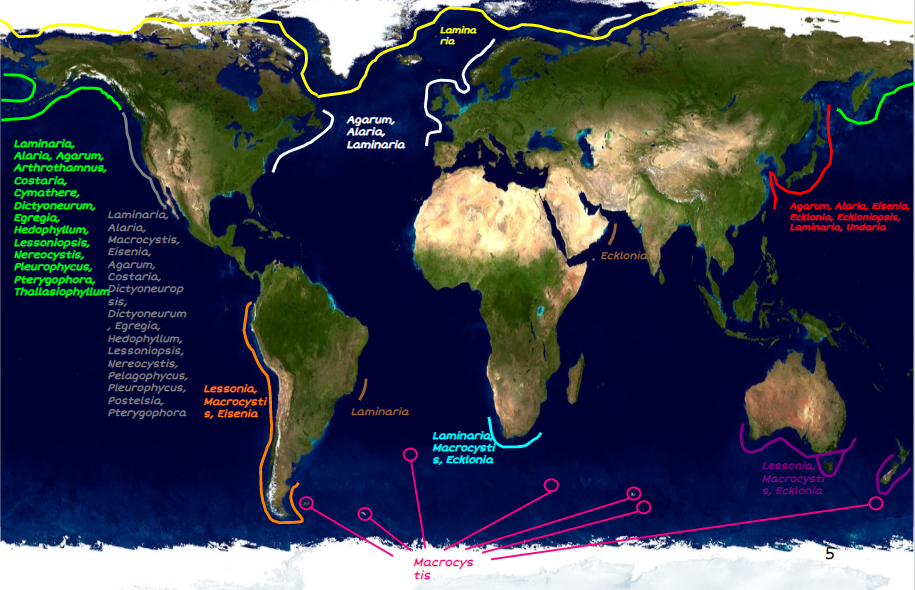
We'll have a blog specifically discussing the differences between the kelp forests of California and those of Chile in the next few weeks --courtesy of Phycology lab student Ann Bishop-- but for this post we wanted to discuss what we actually did during the class.
The purpose of this class has always been to bring researchers from different countries together to discuss how they are studying kelp and what patterns they have found. The class has always been held in Chile, but the location has changed each time. This year we were hosted by the Estación Costera de Investigaciones Marinas (ECIM) in Las Cruces, a small coastal town with a big research impact.

In addition to the eight Moss Landing students, we had a diverse group of classmates from Columbia, El Salvador, Brasil, Argentina, and Peru. Everyone had a different focus, so we were able to bring many perspectives into our discussions. Guest lecturers provided insight into kelp systems in America, Chile, the UK, and even an exploratory trip to look for populations in Antarctica. They shared the techniques they use to study these systems, including molecular tools to study genetic drift (it's complicated...) and traditional "common garden" transplant experiments to look at how seaweeds react to their environment by changing their body type (we refer to that ability as phenotypic plasticity).
But of course, we didn't come all the way to Chile to lecture in a classroom (although their views rivaled our own here in Moss Landing). As part of the class, we also conducted surveys in both the intertidal and the subtidal to get a sense of how the forest-forming kelp Lessonia differs between the two environments and how that impacts the associated communities of invertebrates. We looked at the structure of the holdfast, the number of stipes (think of a stem), and the lengths of the blades. The the reality of what that looks like can be seen in this YouTube video.
In California, kelp forests are known to be diverse ecosystems that support hundreds of species of plants and animals. They provide refuge and nursery habitat for many species of fish, provide food for herbivores and detritivores (who eat the unattached drift kelp), and create a complex three-dimensional habitat. Encrusting invertebrates grow upon the blades while brittle stars, snails, urchins, and crabs hide out in the holdfasts.
But our giant kelp, Macrocysitis, also forms giant canopies. It anchors itself to the bottom with a dense, tangled knot of "roots." It can grow several feet in a single day and a single plant can grow up to 175 feet tall. It reproduces continuously. It literally changes the dynamics of the water, wind, light, and flow. In California, there is no commercial harvesting of kelp for human consumption.
By contrast, Lessonia is a much shorter plant, reminiscent of a palm tree. The holdfast is spindly, like a mangrove root. It grows more slowly. It reproduces only during certain times of the year. And within Chile, there is a multi-million dollar industry around harvesting Lessonia for a natural sugar called alginate. As a result, plants look very different in harvested areas, where they are much younger on average.
You can see this YouTube video from our dive to sample the subtidal during the class that shows what a mature Lessonia forest looks like (thank you to Dan for the footage).
As part of the class, we will be asking different questions regarding the ecology of the Lessonia kelp forests and using the data we collected to answer them. For example, we might ask if the plants are significantly different between harvested and non-harvested sites or between the intertidal and subtidal sites. We might also want to know how those differences change the invertebrates we see in each area. If the plants are growing large enough to scour the bottom with their blades, are invertebrates being swept away?
At first blush, the observations we made do seem to suggest that there are differences between the plant morphology --or what it looks like-- in the intertidal and subtidal. This makes sense when you think of the conditions the plants have to endure. In the intertidal, plants are having to deal with waves crashing on them all the time. As a result, the blades tend to be longer and thinner, which makes them more streamlined, and the plants themselves are more squat and close to the bottom.
There also seem to be differences in the invertebrates and fishes you see in harvested vs. non-harvested areas. You can see a slideshow of some of those critters below. We suspect that the scouring we referenced above keeps smaller grazers such as snails away from the holdfasts of the larger plants. Fish are known to aggregate to kelp for shelter and food, so we expect this to play out in the surveys as well.
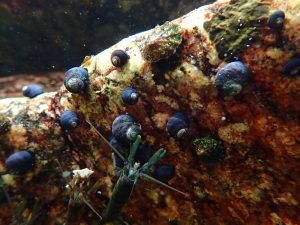
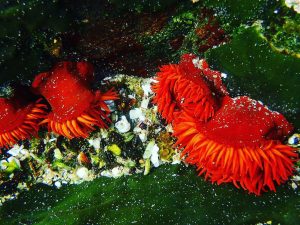

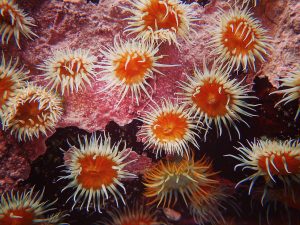
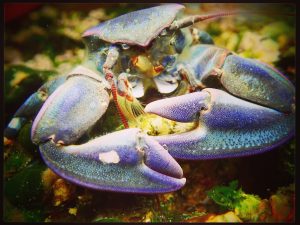
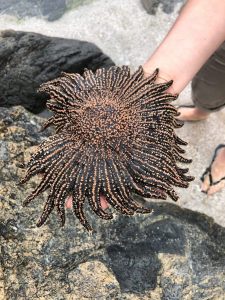
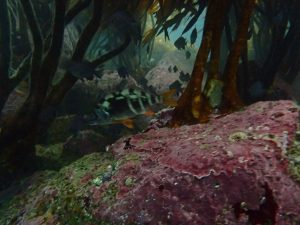
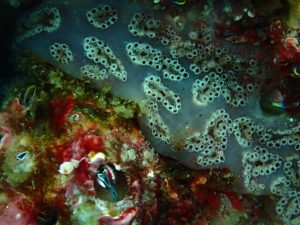
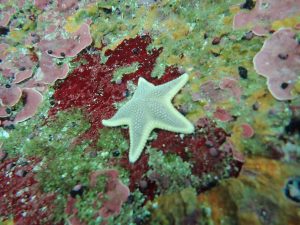
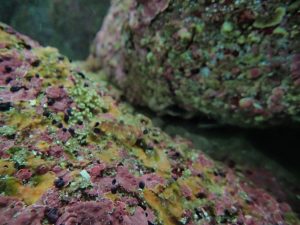

Of course, it wasn't entirely all work and no play. Many of us were able to travel before or after the class. Chile is such a long country, there is anything and everything to see. We came away with new friends. We tried the famous Chilean wine and pisco (after our work was done, of course). And we may or may not have adopted about 50 street dogs over the course of the trip.
I often joke that while we may not get paid a ton as scientists, we make up the difference with perks of the job. Travel to new places. Lots of free food. The ability to get outside and work hands-on. Classes such as this are a great opportunity we are afforded as graduate students to broaden our skillset and worldview. Personally, it was just enough of a taste to know I'll be back sometime soon. Gracias por todo Chile!


